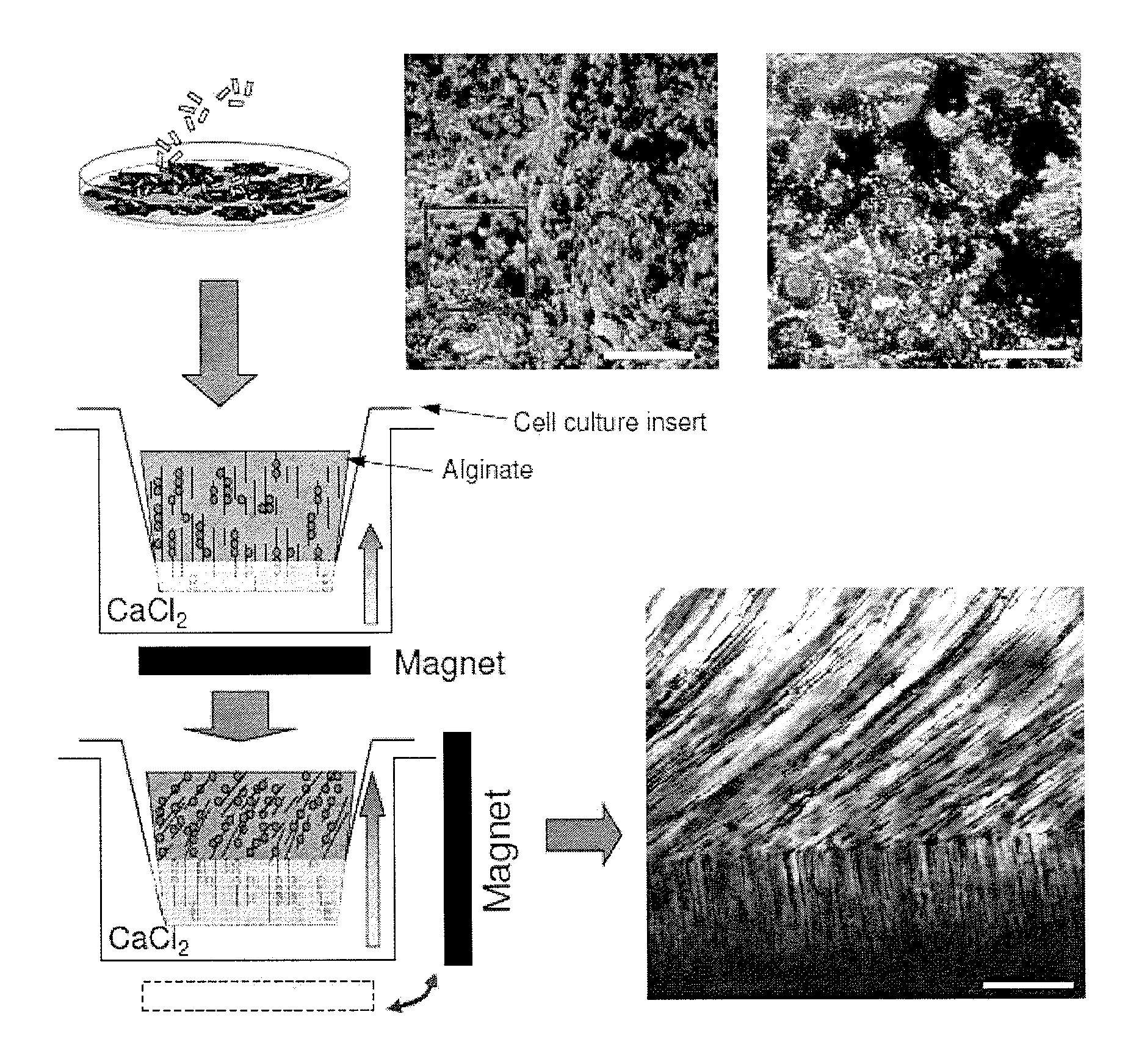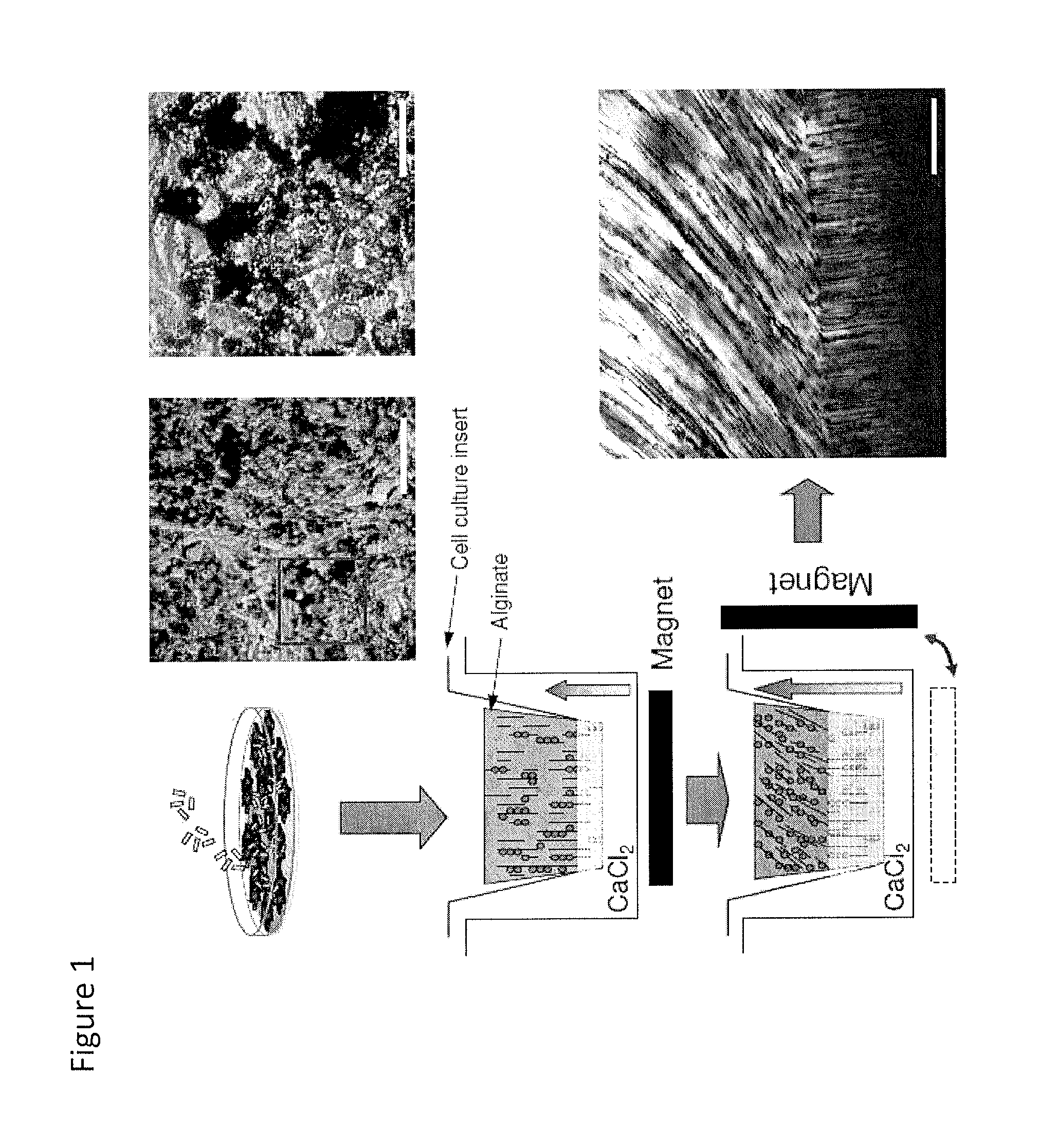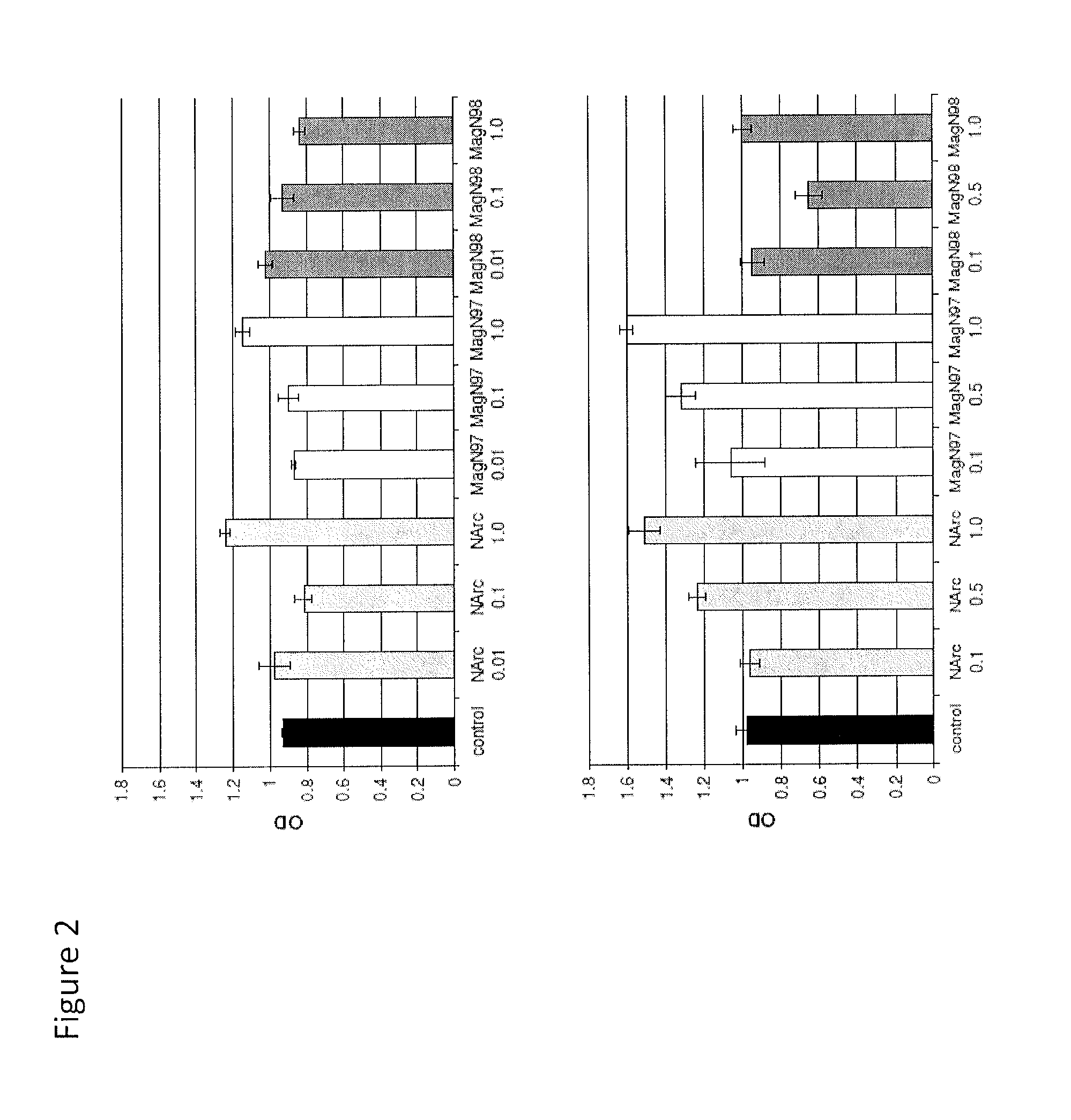In situ tissue engineering using magnetically guided three dimensional cell patterning
a three-dimensional cell patterning and in situ tissue technology, applied in the field of in situ tissue engineering using magnetically guided three-dimensional cell patterning, can solve the problems of not being able to predictably achieve functional hyaline cartilage, inability to transfer approaches to clinical settings, laborious procedures,
- Summary
- Abstract
- Description
- Claims
- Application Information
AI Technical Summary
Benefits of technology
Problems solved by technology
Method used
Image
Examples
example 1
Mammalian Cell Viability in Response to Iron Oxide Particles
[0145]Three iron oxide materials were examined:
[0146](i) NanoArc Industrial maghemite (Fe2O3), 20-40 nm diameter, “NArc”;
[0147](ii) Magnetite (Fe3O4) 97%-325 mesh, ˜44 μm diameter, “MagN97” and
[0148](iii) Magnetite (Fe3O4) 98% 20-30 nm diameter (MagN98).
[0149]The iron oxide materials were obtained from the same source (Alfa Aesar, Ward Hill, Mass.). Each particle was weighed and washed in 5 mL absolute ethanol once, centrifuged for 5 minutes at 2000 rpm, washed with 1×PBS three times (5 mL), and finally resuspended in PBS at a weight to volume of 10 mg / mL. Each mixture was sterilized via autoclave.
[0150]Human articular cartilage was obtained from tissue banks (see above). Chondrocytes were isolated via enzymatic digestion and cultured for one passage.
[0151]Specifically, human chondrocytes were seeded in 96-well plates (5000 cells per well) and precultured overnight in DMEM with 2% calf serum. Following pre-culture, the cell...
example 2
Evaluation of Gene Expression in Human Chondrocytes Mixed With Iron Oxide Particles
[0164]Human chondrocyte pellets cultures (5×105 cells each) were formed in the presence of iron oxide particles (1 mg / mL).
[0165]Three species of iron oxide particles were tested separately:
(i) NanoArc industrial maghemite (Fe2O3), 20-40 nm (NArc);
(ii) Magnetite (Fe3O4) 97%-325 mesh (˜44 μm) (MagN97) and
(iii) Magnetite (Fe3O4) 98% 20-30 nm (MagN98).
[0166]Cell pellet cultures were maintained in serum-free ITS+ medium supplemented with TGFβ1 (10 ng / mL), for 12 days (as described by Barber et al. (2004). Osteoarthritis Cartilage 12, pp. 476-484). The medium was changed every 3 days. After 12 days, some pellets were fixed and embedded in paraffin for histology, while other pellets were prepared for RNA extraction for gene expression analysis.
Gene Expression Analysis
[0167]Cells were harvested, and total RNA was isolated from the cultured cell pellets, using the RNAeasy mini kit (Qiagen, Hilden, Germany). Fi...
example 3
Evaluation of Gene Expression in High Density Magnetically-Labeled Chondrocyte-Alginate Cultures
[0174]Human chondrocytes were incubated with MagN97, MagN98 or NArc (1 mg / mL) for 24 hours. Particles rapidly adhered to cells within 30-40 minutes and some particles were engulfed by the cells over 24 hours. Following removal of excess particles by washing in PBS, the cells were detached, mixed into 2% alginate, and transferred into cell-culture inserts, and cultured for two weeks (FIG. 1). The cultures were developed using 2×106 cells.
[0175]Three species of iron oxide particles (1 mg / mL) were tested separately.
Gene Expression Analysis
[0176]Cells were harvested and total RNA was isolated from the isolated cells using the RNAeasy mini kit (Qiagen, Hilden, Germany). First strand cDNA synthesis was performed using total RNA as a template according to the manufacturer's protocols (Applied Biosystems, Foster City, Calif.). Quantitative real time PCR was performed using TagMan® gene expression...
PUM
| Property | Measurement | Unit |
|---|---|---|
| magnetic field | aaaaa | aaaaa |
| diameter | aaaaa | aaaaa |
| diameter | aaaaa | aaaaa |
Abstract
Description
Claims
Application Information
 Login to View More
Login to View More - R&D
- Intellectual Property
- Life Sciences
- Materials
- Tech Scout
- Unparalleled Data Quality
- Higher Quality Content
- 60% Fewer Hallucinations
Browse by: Latest US Patents, China's latest patents, Technical Efficacy Thesaurus, Application Domain, Technology Topic, Popular Technical Reports.
© 2025 PatSnap. All rights reserved.Legal|Privacy policy|Modern Slavery Act Transparency Statement|Sitemap|About US| Contact US: help@patsnap.com



